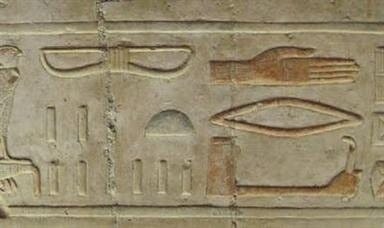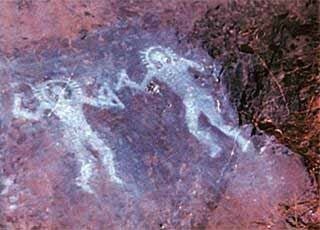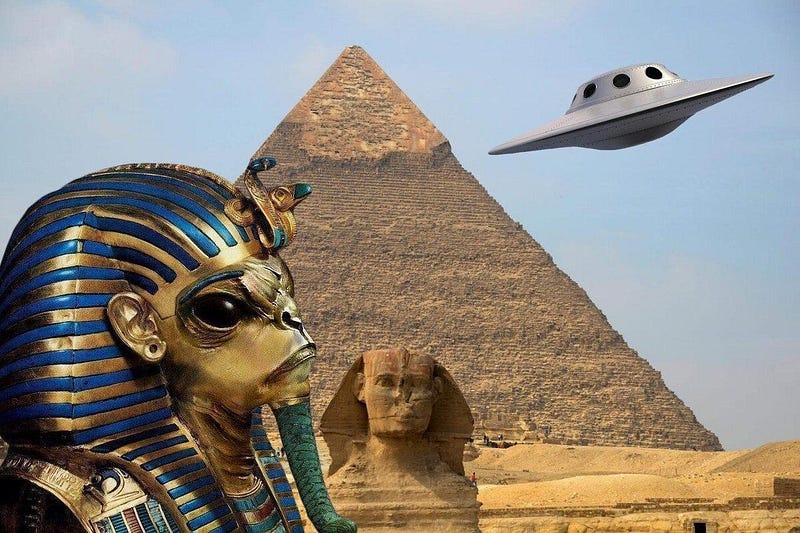Exploring the Ancient Alien Hypothesis: Fact or Fiction?
Written on
Chapter 1: Understanding the Paleocontact Hypothesis
The question of whether extraterrestrial beings visited Earth in ancient times has sparked considerable debate. In this examination, we will explore the paleocontact hypothesis and its validity.
The paleocontact hypothesis, which suggests that aliens visited our planet in the distant past, first gained traction in the early 1900s. Notable figures such as Erich von Däniken, Zecharia Sitchin, and Alexander Kazantsev have championed this idea, alongside scientists like Konstantin Tsiolkovsky and Soviet mathematician Matest Agrest.

Multiple interpretations of the paleocontact hypothesis exist. Each proponent utilizes different historical, archaeological, and paleontological sources, leading to varied conclusions while sharing a common belief that extraterrestrial visitors influenced ancient human civilization.
Section 1.1: Arguments from Supporters of the Hypothesis
The arguments supporting the paleocontact hypothesis can be categorized as follows:
- Unique interpretations of ancient mythologies and sacred texts. For instance, Agrest posits that the destruction of Sodom and Gomorrah was due to a nuclear explosion, while Sitchin describes the Anunnaki from Sumerian texts as advanced alien beings.

- Alternative interpretations concerning the function of ancient structures. Von Däniken claims that Stonehenge served as an alien astronomical observatory, while the geoglyphs of Nazca are suggested to be extraterrestrial landing sites.
- Selective readings of archaeological artifacts, such as rock paintings and statuettes, which some interpret as representations of aliens and advanced technologies.

Supporters often cite specific frescoes as depicting advanced flying machines with pilots, reinforcing their claims of ancient extraterrestrial encounters.
Section 1.2: Scientific Perspectives on Paleocontact
From a scientific standpoint, many aspects of the paleocontact hypothesis are deemed either unscientific or pseudoscientific. This is largely due to:
- Biased interpretations of historical sources.
- A disregard for established scientific data.
- Oversimplifications of findings, texts, and inscriptions.
Let’s examine some examples to illustrate these points.
The first video, Ancient Aliens: Extraterrestrial Legends & UFO Mysteries Revealed explores various claims about alien visitations and their supposed impacts on history.

Consider the so-called "Ancient Egyptian Helicopter" found in the Abydos hieroglyphs. Some claim these inscriptions depict modern aircraft; however, this is more a product of wishful thinking than fact. The apparent shapes are simply the result of natural erosion of the sandstone.

A similar inscription at Karnak, which holds a complete record of the Pharaoh's titles, demonstrates no connection to contemporary technologies.
The second video, The Universe: ALIEN PLANETS and the Great Unknown, delves into the mysteries of potential extraterrestrial worlds and their implications for our understanding of the universe.
Section 1.3: Misinterpretations in Rock Art
Proponents often see alien figures in ancient cave art. For example, the rock paintings from Valcamonica in Italy are claimed to show astronauts. However, it's plausible that these images represent shamans or deities adorned in ceremonial garb.

Such interpretations can lead to erroneous conclusions. Iconography across cultures often includes halos or circular motifs that signify divinity, not extraterrestrial origins.

Section 1.4: The Construction of Ancient Monuments
Supporters of the hypothesis contend that ancient societies could not have constructed monumental structures like the pyramids without extraterrestrial assistance. However, historical analysis contradicts this view.

While the precise techniques are not fully understood, records from ancient historians like Herodotus highlight the use of simple yet effective tools and methods for construction. This challenges the notion that aliens were necessary for these accomplishments.

The belief that ancient Egyptians lacked the intelligence to build the pyramids undermines the ingenuity and capability of these civilizations. In fact, historical records indicate that they were resourceful and technologically adept.

Conclusion
In conclusion, the scientific community largely dismisses the paleocontact hypothesis due to the absence of credible evidence supporting ancient alien visitations. Most arguments presented by its proponents are either misinterpretations or can be explained by simpler, more logical means.
While it remains a captivating subject, the likelihood of extraterrestrial contact with Earth in the past is exceedingly low, given the vast distances of space and the limitations of interstellar travel. As Carl Sagan famously stated, “Absence of evidence is not evidence of absence.”
If you're interested in more articles about space and related topics, feel free to subscribe to our channel and submit any inquiries you’d like us to address in future pieces. You can also support our work by becoming a member for just $5 a month, which will help us enhance our content creation efforts.